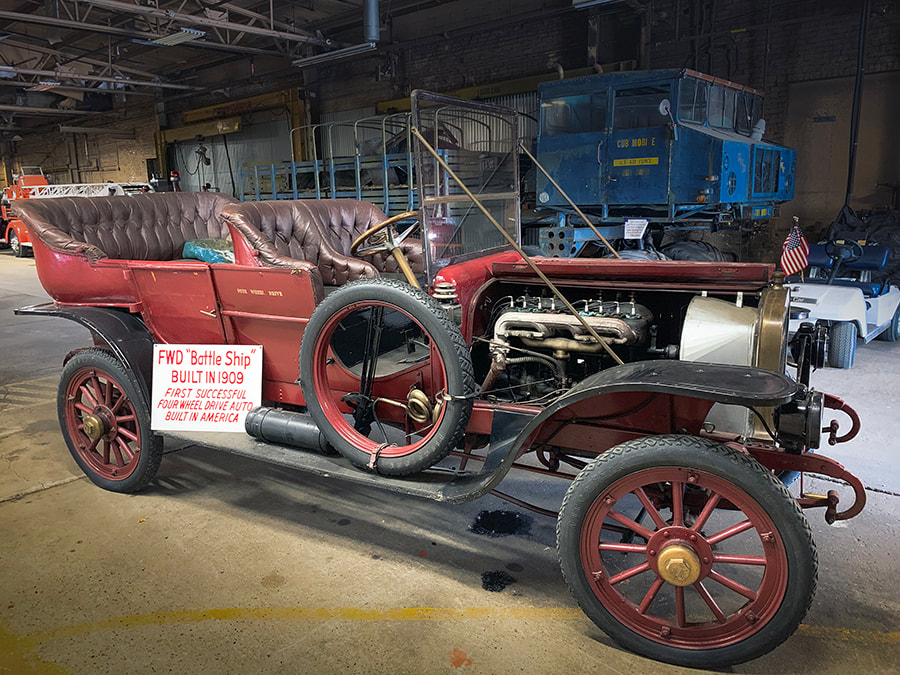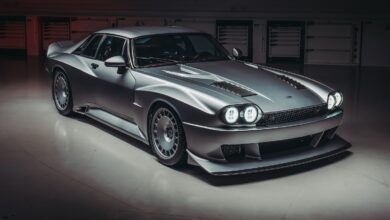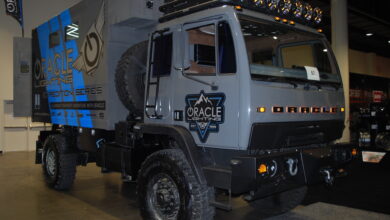Vintage Shop Equipment: Wisconsin Machine Shops are Real-Life Relics — Part 2

Two machine shops in Waupaca County, Wisconsin—both involved with early automobiles—survive today. Both date from the early 1900s and may be among the oldest surviving auto shops in America. Both started as blacksmith shops and added automobile repair to their services as automobile production boomed. One is hidden in the cellar of a still-open hardware store, and the other, the FWD Seagrave Museum, is known as the “birthplace of four-wheel drive” and is located in Clintonville, Wisconsin.
For many years, the FWD-Seagrave Museum was a small collection of rare cars and trucks housed in the tiny machine shop where Otto Zachow and his brother-in-law, William Besserdich, invented four-wheel drive. The two Clintonville blacksmiths and machinists turned to lawyer Walter A. Olen to help them establish the Four Wheel Drive Auto Co. of Clintonville. Seagrave was added in 1963.
This Clintonville company has always had a strong sense of history. For years, that appreciation for its past was reflected in the authenticity of the small museum. Now—thanks to Walter Olen’s granddaughter Marcia, Clintonville native Mark Thomas and many volunteers—the FWD Museum is expanding into a new facility.
“The old museum was made of oil-soaked wood,” Thomas, who lives in Birmingham, Michigan, told the Shawano Evening Leader. “We were concerned a fire could destroy important history. Now, the old shop building will remain part of the museum and is going to be redone to look like the historic blacksmith and machine shop it once was.”
Zachow and Besserdich had no idea that their 1906 design for a front drive axle with steerable hubs and universal joints would start the four-wheel-drive industry. They invented it after their 1905 REO car got stuck in the mud. A transfer case and the driveshafts necessary for a four-wheel-drive system were added to the REO.
During the summer of 1907, the pair applied for patents and started building their first car. By 1908, they whipped up a large touring car called “The Battleship” fitted with four-wheel drive. It worked very well, although its steam engine was overly heavy. They installed a gas engine and drove the car where others couldn’t go. It survives today.
From 1910 to 1911, FWD built about six cars before switching to trucks. The early FWD trucks performed extremely well in a United States Army cross-country trial, which then led to the purchase of an FWD chassis for testing. With a body mounted on back, this chassis became an Army Scout Car and again proved the value of four-wheel drive.
When the European Allies entered World War I in the summer of 1914, there was a need for four-wheel-drive trucks. The British Army quickly ordered 50. Then, the U.S. Army ordered 147. By 1917, the Army had ordered 3,750 FWD Model B 3-ton trucks. FWD grew and so did Clintonville. Workers were hired and had to move there for work. Thousands of soldiers—who had to be trained to drive the trucks—were sent to the town.
Things slowed after World War I, but picked up again in the 1940s when FWD made 30,000 World War II military vehicles. In 1958, the company became FWD Corp. In 1963, FWD acquired Seagrave Fire Apparatus from Columbus, Ohio, and brought it to Clintonville. Many tower ladders made on Seagrave chassis carried FWD nameplates.
Currently, the Zachow & Besserdich machine shop is undergoing the first phase of its remodeling.
The Four Wheel Drive Foundation runs the FWD Seagrave Museum. It’s a non-profit, charitable organization formed for the purpose of maintaining and expanding the historical museum to house vehicles and memorabilia pertaining to the early development of the four-wheel-drive principle.
The Foundation takes vehicle donations and documents to archive and manage under the guidelines of the National Association of Automobile Museums. The Foundation also preserves historical films and creates new films and media. Outreach programs are being organized and commemoratives will be issued.
Click here for more information on the museum and foundation.



